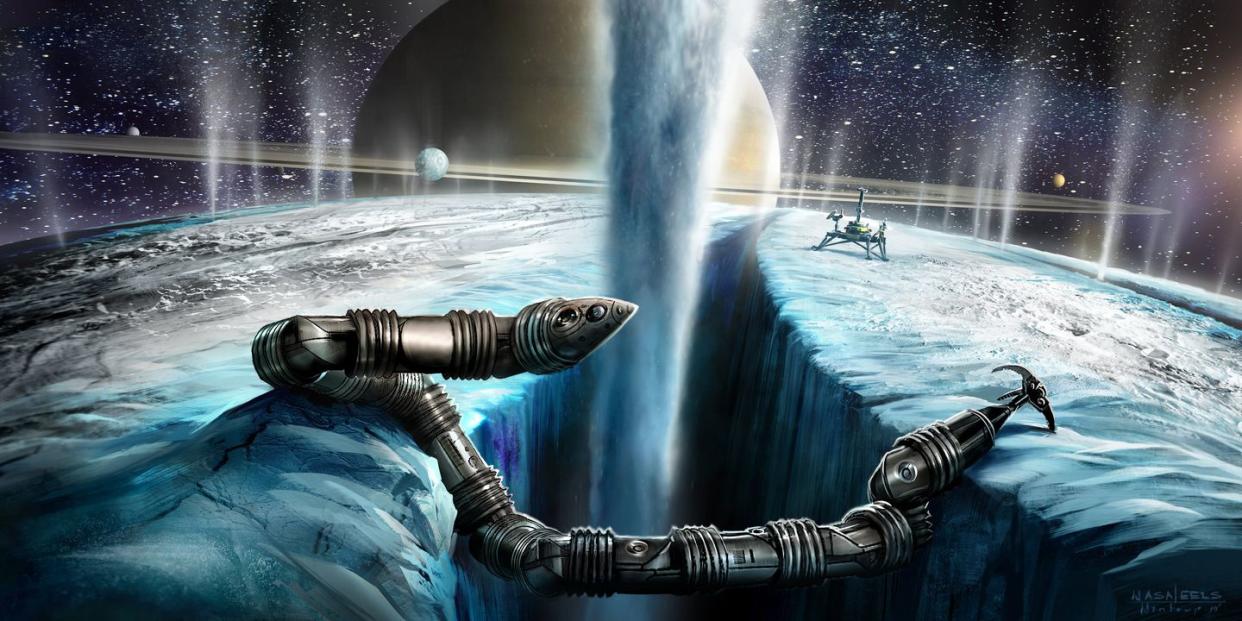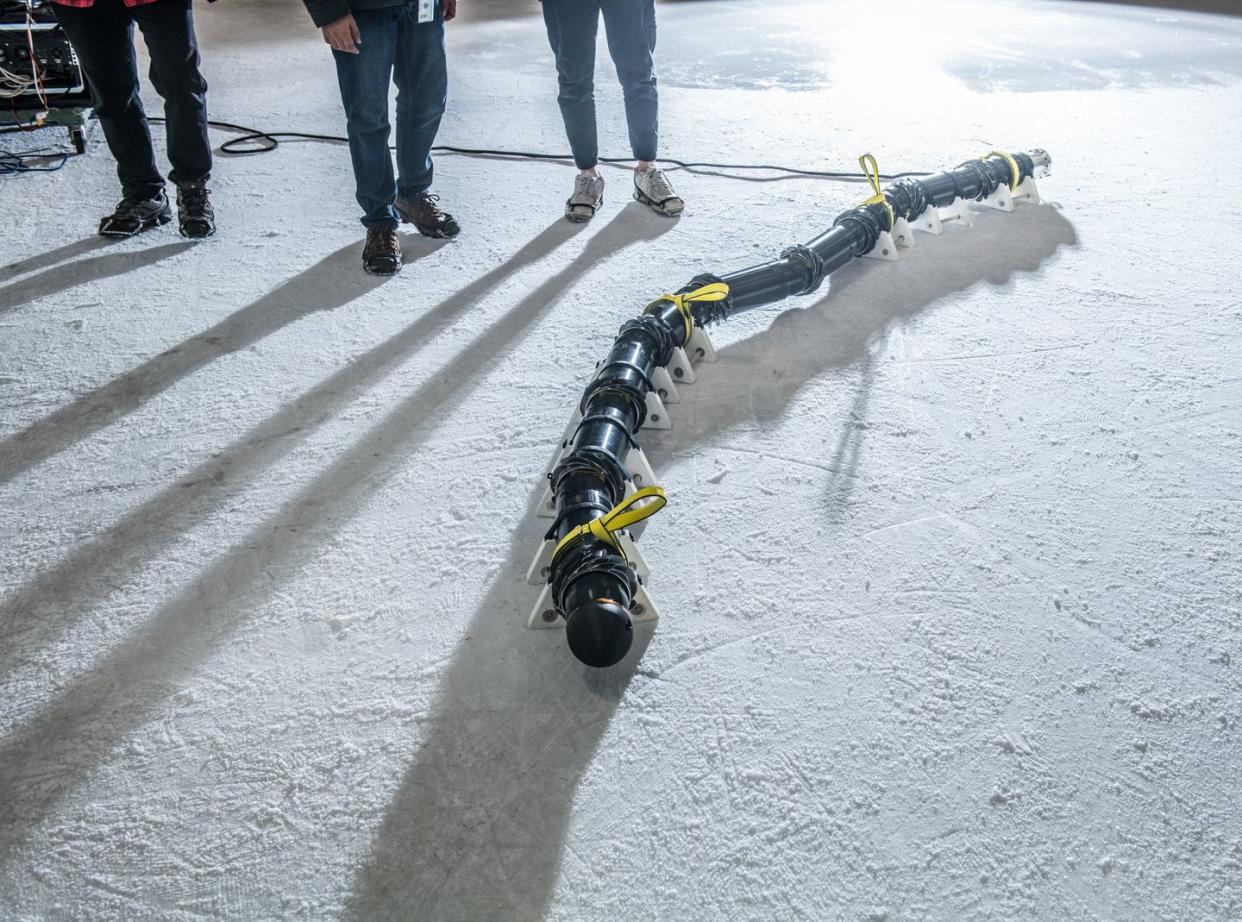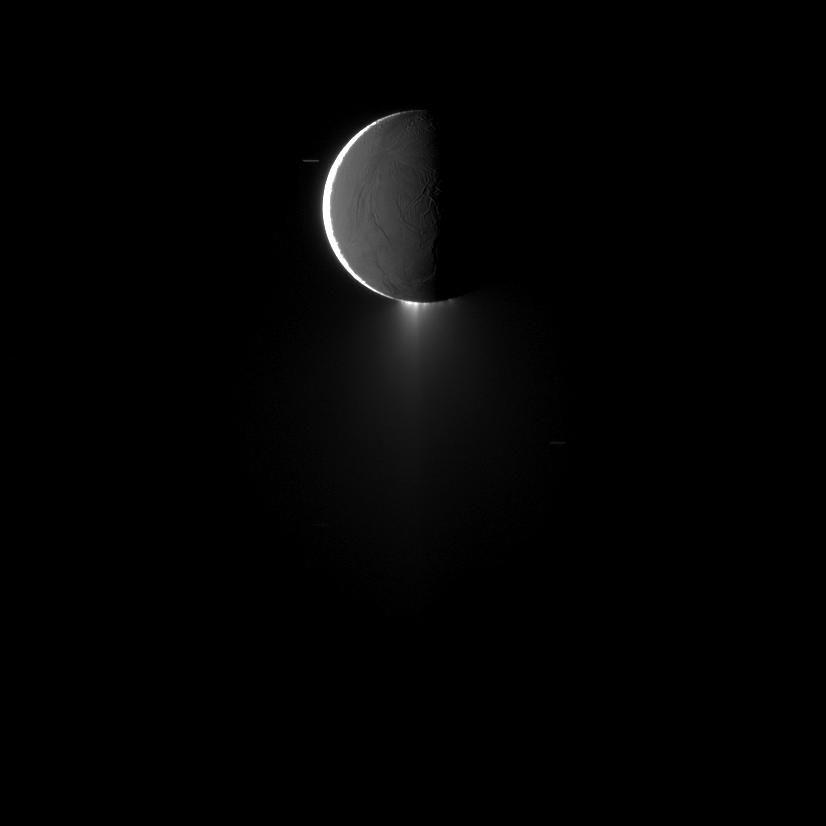NASA Is Sending a Snake Robot to Search for Life on Saturn's Moon

NASA is currently developing EELS (Exobiology Extant Life Surveyor) to send to Enceladus, one of Saturn’s moons.
The snake-like self-propelled robot will be able to navigate all kinds of terrain, including deep crevasses and underground oceans.
Enceladus is one of the Solar System’s most exciting prospects for finding extraterrestrial life, as a warm ocean covers the planet just below its surface.
We as a species are pretty fond of our off-world investigative vehicles. If you don’t believe that, look no further than the fact that top scientists programmed the Curiosity Mars rover to sing “Happy Birthday” in celebration of its first anniversary on the red planet. We have a tendency to fall in love with the hardworking robots.
Soon, there will be another off-world robot in the mix. But rather than looking a bit like a dune buggy with a small projector on top, it’s built to look a lot like a snake. This is EELS, and while its form may not be everyone’s cup of tea, it’s set to impress the world with some fascinating science.

EELS, or Exobiology Extant Life Surveyor, is a NASA project aimed at finding signs of life on Enceladus, one of the biggest of Saturn’s moons. Right now, engineers are only in the prototype phase. But according to a recent NASA statement, EELS is eventually meant to “explore internal terrain structures, assess habitability and ultimately search for evidence of life. It is designed to be adaptable to traverse ocean-world-inspired terrain, fluidized media, enclosed labyrinthian environments and liquids.” It’s also designed to be self-propelled, so that snake-y body will be moving on it’s own accord.
Basically, EELS is meant to be flexible. Once it’s built, if all goes according to plan, it will be able to get anywhere, go through anything, and find any signs of life that might be on the way. That’s a pretty big deal, especially on Enceladus.
While there’s a lot more talk about finding life on Mars (and, recently, on Venus), many astronomers will tell you that one of the best chances we have at finding life somewhere else in our Solar System is on Enceladus. On the surface, it doesn’t look like much—just a big hunk of ice. But it’s what’s underneath that counts.

Because under the surface, Enceladus is a water world. Data from the Cassini mission showed researchers that the entirety of the moon is covered in liquid water right under the surface. It constantly spews out through cracks in that crust, sending plumes of vapor, gas, and debris out in huge plumes—some of which forms one of Saturn’s rings. And when Cassini sampled that ring, it found a substance called silica nanograins.
According to a NASA website, silica nanograins are only created “where liquid water and rock interact at temperatures above 90 degrees Celsius (about 200 degrees F). This points to hydrothermal vents deep beneath Enceladus’ icy shell, not unlike the hydrothermal vents that dot the ocean floor here on Earth.” This means that not only is Enceladus fascinating, but even though it’s far away from the warmth of the Sun, its vast underground ocean is theoretically habitable.
EELS wants to finally take an up-close peek. In order to do that, it will need to be able to both slither into vents in the crust and swim through the oceans underneath, something none of our space robots have ever been able to do. And that functionality, of course, will also make the design an excellent candidate for other applications, like exploring Martian polar caps and even spelunking into crevasses in ice sheets here on Earth.
But Enceladus remains the main mission. And maybe, someday, EELS’s serpentine superpowers will finally unlock one of the greatest mysteries in the universe: are we alone?
You Might Also Like
